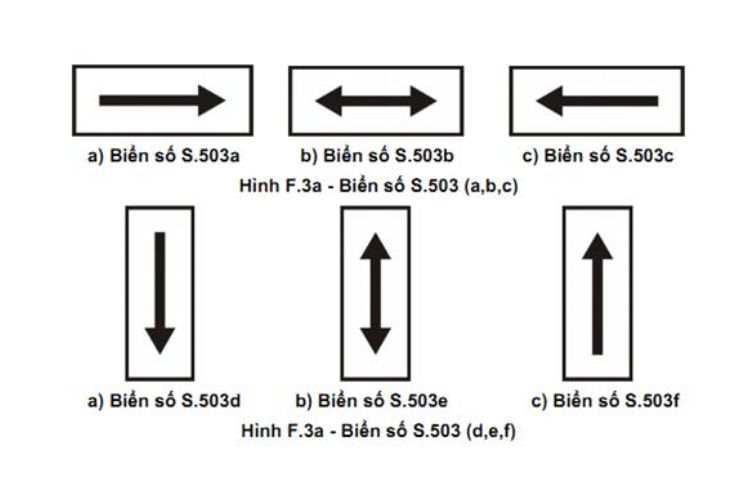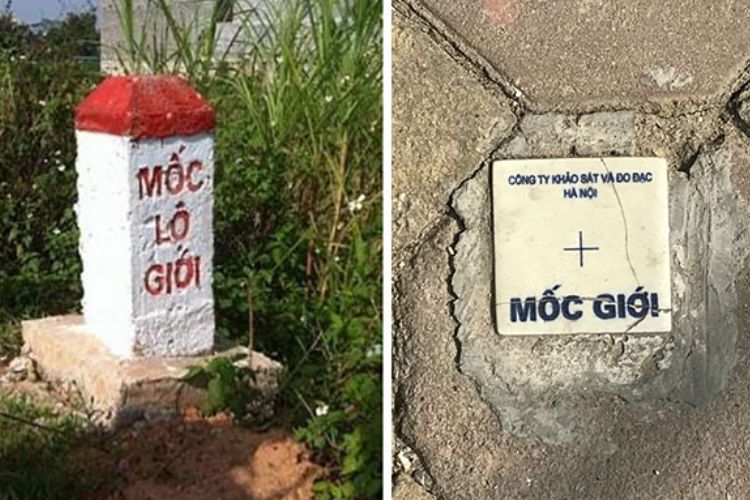1. What is a supplementary traffic sign
Supplementary traffic signs are often placed in combination with main signs for explanation and supplementation for clear understanding, except for license plate S.507 “Turn direction” which is used independently.
2. Meaning of using supplementary traffic signs
Secondary plates have codes S, SG and SH with common names as follows:
– License plate S.501: Scope of effect of the plate;
– License plate S.502: Distance to signaling object;
– Plate number S.503 (a,b,c,d,e,f): Direction of effect of the plate;
– Sea S.H,3 (a,b,c): Direction of effect of the sea;
– License plate S.504: Lane;
– License plate S.505a: Vehicle type;
– License plate S.505b: Vehicles restricted from crossing the bridge;
– License plate S.505c: Limited axle load across the bridge;
– License plate S.506 (a,b): Priority direction;
– License plate S.507: Turning direction;
– License plate S.508 (a,b): Indicates time;
– License plate S.509 (a,b): Explanation of main plate;
– License plate S.510a: Pay attention to slippery roads with snow and ice;
– License plate S.G,7: Camping location;
– License plate S.G,8: Accommodation location;
– License plate S.G,9b: Directions to the parking spot for drivers who want to use public transportation;
– License plate S.G,11a; S.G,11c: Indicates the number of lanes and direction for each lane;
– License plate S.G,12a; S.G,12b: Clear lane indication;
– License plate S.H,6: Exception.
In addition, depending on other traffic situations, other supplementary traffic signs can be arranged accordingly.
The meaning of use of each sign is explained in Appendix F of the National Technical Regulation QCVN 41:2019/BGTVT on Road Signs

3. Size, shape and color of supplementary traffic signs
– Secondary signs are rectangular or square in shape.
– Signs have a white background, black drawings and writing, or have a blue background and white writing. License plates S.507 and S.508 (a,b) have unique characteristics indicated in Appendix F of this Regulation;
– Detailed sizes of drawings and colors of signs are specified in Article 16, Article 17 and Appendix K of this Regulation.
4. Location of supplementary traffic signs
The secondary signs are all placed directly below the main sign, except for the independent license plate S.507, which is placed on the back of the curve facing the direction of travel or placed in the middle of the safe island where the road intersects.
5. The sign is written in words
– Signs written in regular letters are used in cases where the prescribed sign types cannot be applied or in other necessary cases.
– The sign is written in rectangular letters. Signs used for instructions have a blue background with white writing, signs used for warnings have a yellow background with black letters, signs used for prohibitions or orders have a red background with white writing.
– The words written on the sign depend on the content of instructions, warnings, prohibitions or orders but must be brief. The sign used to warn of prohibition begins with the word “Forbidden”.
– Rectangular compound signs can be used to display information in cases where there is a lot of information to be shown and the arrangement of single signs is complicated.
6. Shape, size, drawings of supplementary traffic signs and signs written in words
The shape, size, and drawings of signs are specified in Article 16, Article 17 and Appendix K of this Regulation. The shape of the sign written in words is a rectangle with a minimum height of 20 cm.
7. Letters and numbers of auxiliary plates and signs written in words
– All letters and numbers recorded on signs and kilometer columns are used consistently in two styles: regular and compressed as prescribed in Article 17 and Appendix K;
– Font style often used in cases of short and medium lines;
– Compressed typeface used in cases of long lines of text;
– On a line of text, one font style must always be used;
– The height of the sign written in smallest letters is 10 cm (corresponding to coefficient 1). With composite signs, it is allowed to use letters as small as 5 cm.





